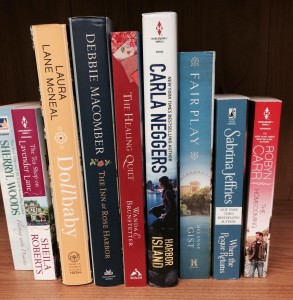I remember the time well. The summer of 1987. The summer I decided to finally pursue my lifelong dream of writing novels. Until then, my literary endeavors had been in the journalistic and public relations fields. Newspaper feature writing. As the public information director for a trade association. As a freelance public relations counselor. But made-up stories keep swimming around in my head. Stories and characters and settings. I wanted to learn how to mix all those elements into a reading cocktail, into stories. Stories that would be published as books.
At the time my youngest was thirteen years old. We spent many summer days going to Whitewater in Oklahoma City, where Greg and his friends spent hours cruising the Lazy River, making daredevil leaps off the high dive, teasing one another, and flirting with girls. Meanwhile, I commandeered a deck chair and stood guard over the treat-stuffed cooler and kept a vigil on the boys.
There were hours to kill, and I don’t sit still well. Finally I realized that I could use these lazy summer hours to start my research into making my novel-writing dream a reality. So I went to a local bookstore and bought one hundred romance novels, which I read that summer and into the fall. I studied story structure, love scenes, dialogue, particularly how authors I admired showed emotion, because I had been trained to keep the emotion out of my journalistic writings.
All the while, I thought of me. What I wanted to write, what stories I wanted to tell. It wasn’t until I sold my first book of six, MIDNIGHT BLUE, published in 1989 as a Harlequin Superromance, that I finally realized, writing these books wasn’t about me. It was about the reader. It didn’t matter if I liked the story; if readers didn’t get caught up in the characters, they wouldn’t buy a second book of mine, and I wouldn’t have a career.
Ultimately, I learned that I was meant to become an author so I could do what I love to do—help other authors succeed with their publishing dreams. But I learned a valuable lesson during those early years in the publishing business, reading all those novels on a deck chair and pondering what books two and three and four would be about, and that is that It’s all about the reader. What you write, how you promote, what you say on your social media platforms must matter to readers. Must reach them on an emotional level, must make them care about you, because you care about them.
Today, when I counsel authors on promoting their books, on establishing their brands, I constantly remind them to think of the readers, what they want from them, what they want to know about them, what will make them care about them as an author. What will make them tell their friends about you and your books.
I’m not saying authors have to do everything readers ask of them. As an author gains popularity, her readers’ expectations can get out of hand. She doesn’t have to accept every invitation to speak, or ignore her deadlines in order to participate in every reader event across the country. At the same time, I think authors need to remember how they have achieved their success, via the readers. Budgets, deadlines and family demands considered, authors need to make themselves accessible to their readers in some fashion.
Success doesn’t mean an author can sit back and “just write.” They need to show their appreciation to their readers by connecting with them personally, at reader events, or on social media, or by answering the same question time after time after time on Facebook. Or maybe by doing all of the above.
It’s all about the readers, my friends.






